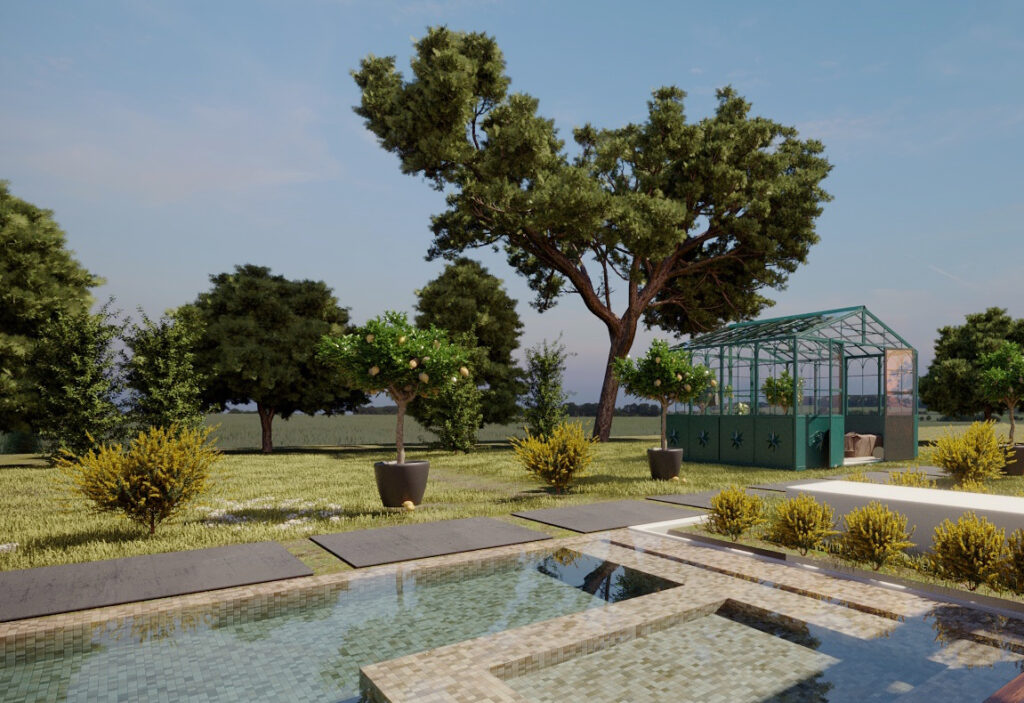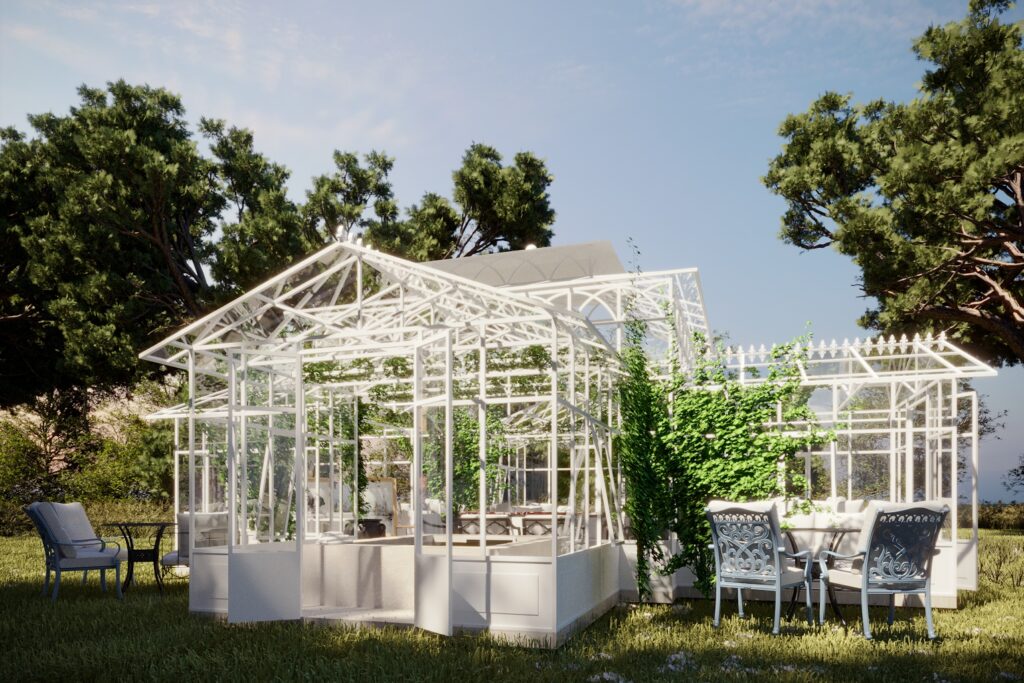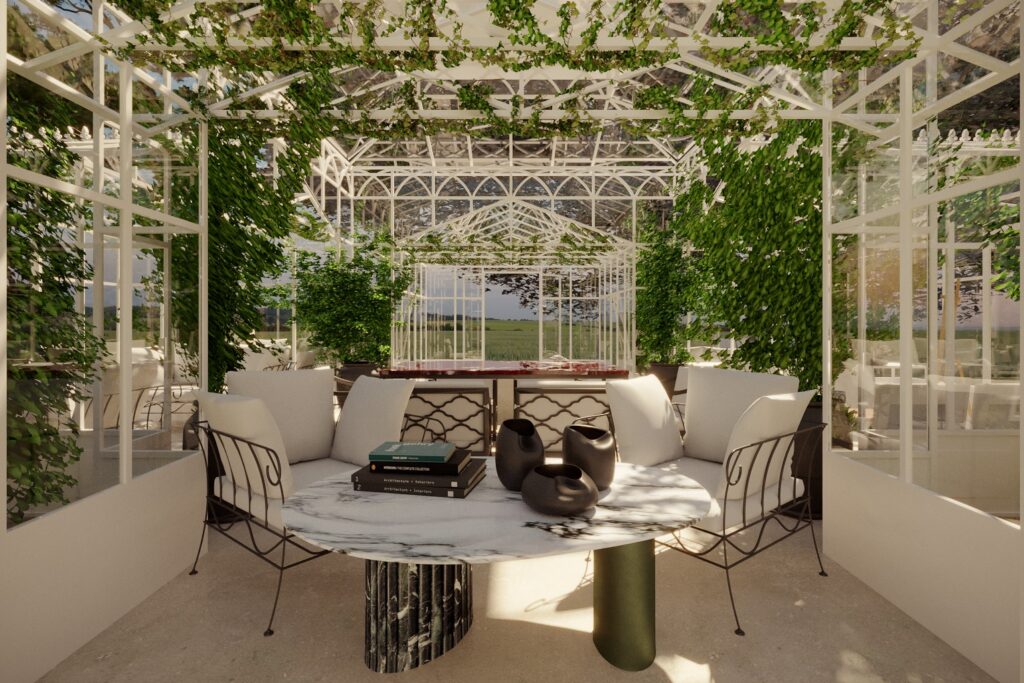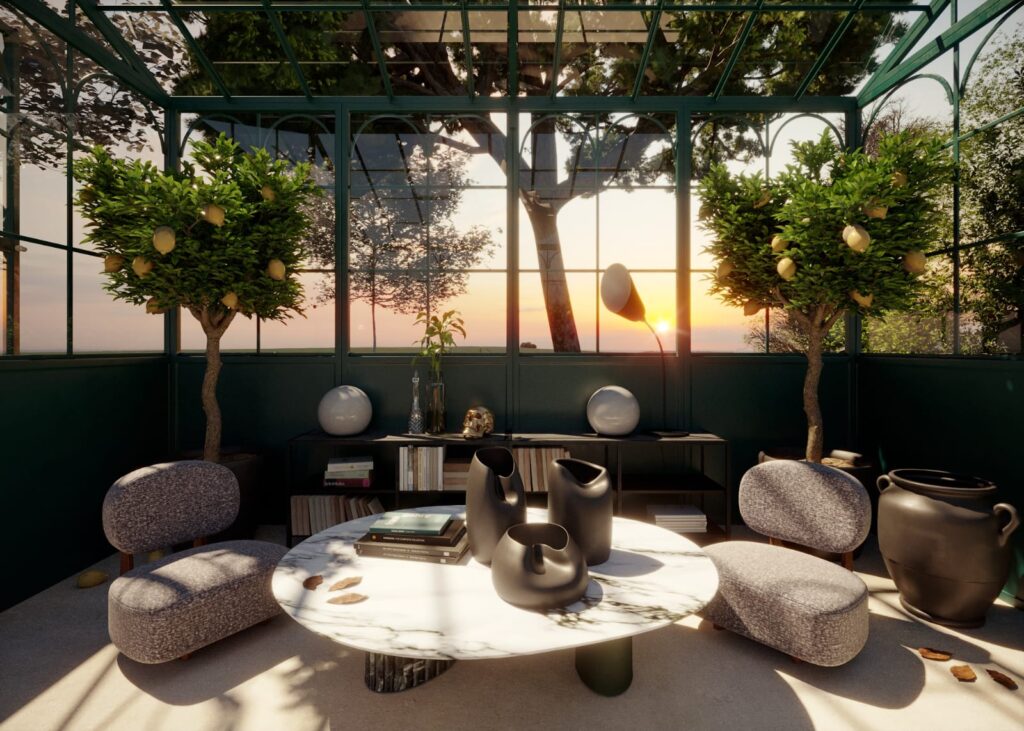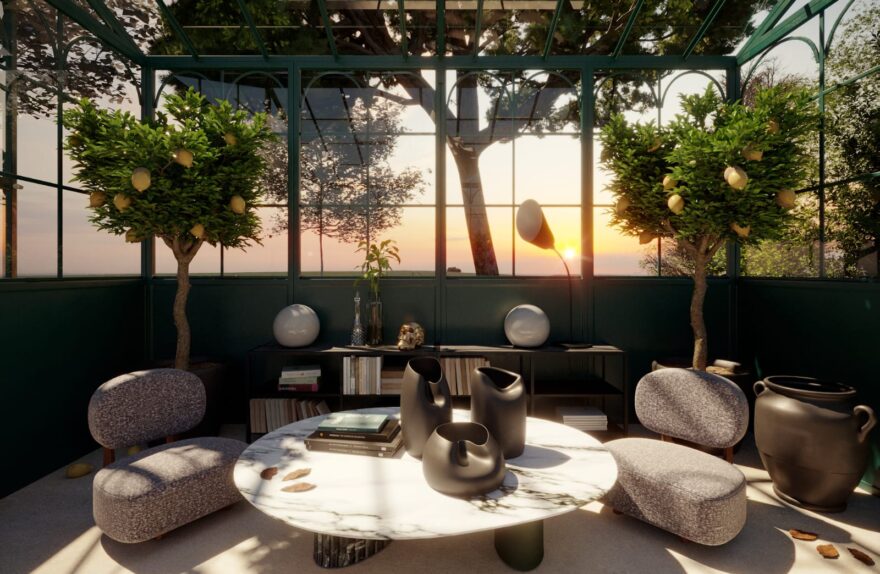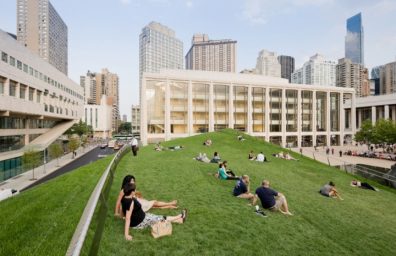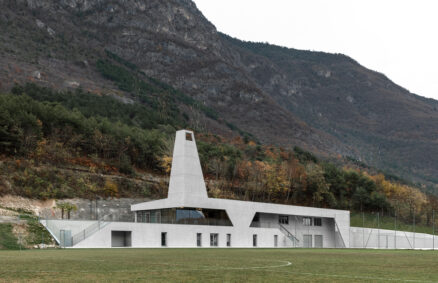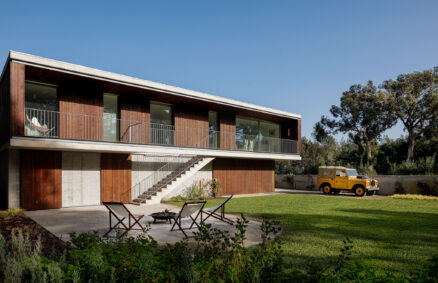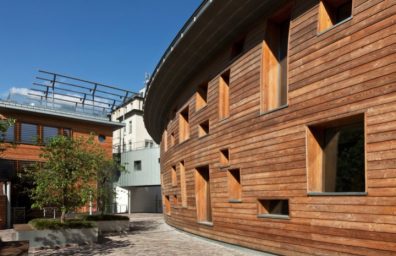A charming oasis, where you are surrounded by nature, even in the midst of the cold season: the atmosphere that the winter garden gives is unique. During the Christmas holidays, it offers itself as a privileged location to receive guests: a space of wonders overlooking the greenery.
A living space that opens up to conviviality
Imagine a cold day, the sky is clear, everything around is silence; while the cheerful chatter of loved ones warms the environment, with ithe roar of laughter in company and the warmth of welcome: eextremely fascinating and evocative, the winter garden actually enriches the house with something new living space which opens up to conviviality. Also called greenhouse, orangery or lemon house, the winter garden presents itself as a dynamic architectural element, intimate and private space, where the harmonious design of the rooms reflects a fluid world of living.
The historical charm of the lemon house
The Orangery or lemon house was born as a building aimed at protecting citrus fruits and some species of exotic fruits from the cold; the name was coined by Jules Hardouin-Mansart, architect of the Sun King, who created, in Versailles, uan extremely beautiful glass structure. The aristocracy of the time was passionate about botany, cultivating exotic species from distant countries, as a symbol of status and prestige. From here, the Orangeries also took the name of "conservatory", a sort of iron and glass casket, intended for the conservation of very rare flowers and plants. In Italy, fascinating examples are the Carolina greenhouse in the Botanical Garden of Palermo, the Tepidarium in the Horticultural Garden of Florence, the Greenhouse of Palazzo Corsini in Rome, the Pollone Greenhouse in Biella, the Greenhouses of the Botanical Garden of Rome, the Greenhouse of Villa Giulia in Naples.
How is a lemon house made?
The lemon houses, also called greenhouses, are creations in certified iron tubing, self-supporting to be placed in gardens, courtyards or terraces, but they can also be placed against the wall of the main building; the infills can be made of Visarm glass sheets or latest generation polycarbonate sheets. For all intents and purposes it is one room created from scratch in multiple sizes, with a square, rectangular or polygonal plan; the roofs can be simple with single or double pitch, transparent or darkened and with skylights.
The lemon houses designed by Studio Sap in collaboration with Krei
The architect Clara Sapori of Studio Sap in collaboration with Krei, offer a new interpretation of the iconic manufacture that has written the history of architecture, in the light of contemporary design. The Stella and Croce lemon houses are entirely tailor-made from design to furnishings, two exclusive living spaces made with quality materials, precious unique and entirely custom artisan works.
- The Stella lemon house was born from Studio Sap's desire to create spaces to live all-round: a study to inspire, a living room, a charming bedroom under the stars, a bright kitchen, a pool house with hydromassage tub. An entirely tailor-made project, from design to furnishings, which combines historic architecture and cutting-edge design.
The choice of materials such as furnishing accessories and design objects is of great importance, as they amplify the harmony of the environment, interpreting the spirit of conviviality. In this direction, Krei, long-time partner of numerous architecture firms, planners and designers offers support in the selection of natural materials: handmade terracotta, continuous surfaces, marble and mosaic.
The choice of materials and furnishings
The flooring of the lemon house has a central role:
- you can opt for dry flooring (which does not require municipal permits) therefore to be understood as removable, made using dry stones, cooked in particular, as well as plates of Trani stone or wonderful slabs of basalt. The continuous surface it can represent an excellent solution, as it presents no escape routes, and gives a more contemporary twist to an environment which by its vocation has a romantic and vaguely vintage character. Il marble, Valuable natural material fits well into the naturalistic context of an outdoor garden, interacting with the architecture of the lemon grove.
The spaces must then be personalized with furnishing accessories in line with the interior style, be it modern, romantic or minimal.
- I UNIQUE furnishing accessories offer objects made fascinating by the characteristic shiny black surface of the bucchero. Etruscan black terracotta produced in a reducing atmosphere, i.e. oxygen-free, thanks to a magical technique that brings together tradition and experimentation by shaping vases with a unique character such as Oblivion, Alcara, caligo.
La Limonaia Croce: the new project by Studio Sap and Krei
Unique and entirely customizable, the Croce lemon house takes its name from the specification Greek cross plan that characterizes it: four arms of equal size intersect at right angles creating a central connecting heart. So that a space no longer remains just a space, but becomes a world of living, each arm has a different function and usability: hydromassage, painting area and reading area. The central fulcrum then allows you to move fluidly and dynamically within the structure.
- The roof is an intersection of pitches at different inclinations, a play of heights and interweavings, which culminate with a wonderful central skylight surmounted by a ridge sphere. The horizontal partition of the lateral infills is slim: the glazing is freer so as to give a little impetus and verticality to the structure.
- The sheet metal boiserie does not exceed 45 cm so as not to weigh down the structure: for the same reason it was decided not to insert the frame, choosing double panelling, like a double ashlar. The arched motif is repeated on the sides of the two skylights, avoiding the optical effect that lowers the lemon house.
- La microcement flooring with a pink and warm nuance, which then simulates the color of terracotta Handmade.
The light color allows you to make the absolute protagonists bucchero e Fluctuation, wonderful table with marble base Dover White and hand-worked brass decorations on one leg, impactful furnishing elements with strong color contrast. The climbing plants embrace the structure from the outside, creating a suggestive bohemian atmosphere, for a unique and prestigious architectural work.
